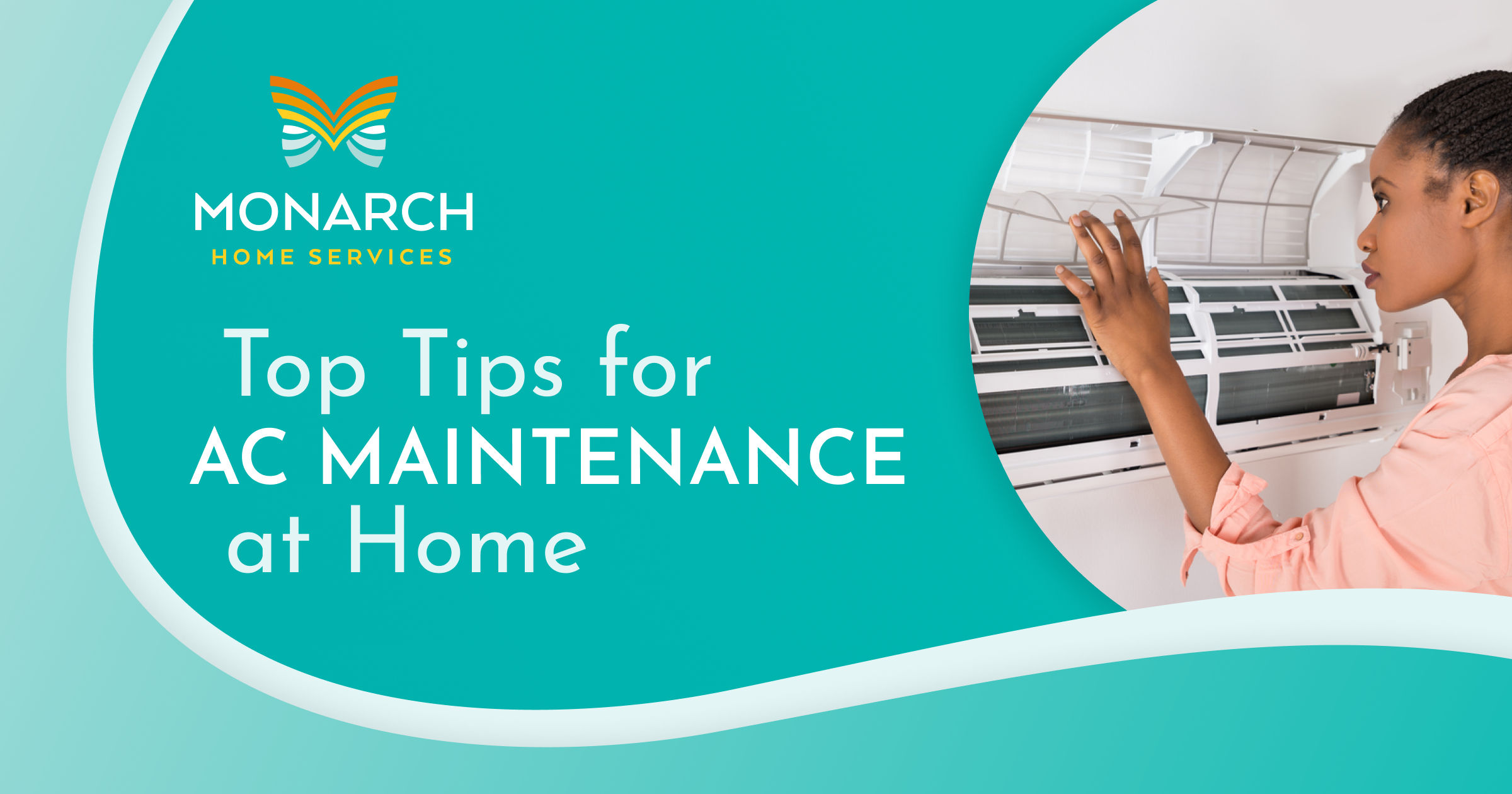Your air conditioner will have fewer problems and last longer with proper maintenance. However, your HVAC contractor’s maintenance plan, as comprehensive as it may be, is not enough to keep your unit in top shape. Follow our tips for AC maintenance at home to reduce the number of repairs you’ll need in Bakersfield, Fresno, and Visalia, CA.
First, remember to turn off the AC before performing these maintenance tasks.
Clean or Replace Dirty AC Filters
Often overlooked, this is the most important AC maintenance task. Installing a clean filter can reduce the unit’s energy consumption by up to 15%. But allowing the system to run with a clogged filter will reduce airflow and efficiency. Dirt that gets through the filter can collect on the evaporator coil and interfere with its ability to absorb heat. Depending on the type of filter, clean or replace it every month or two or more frequently if your home is dusty, you have pets, or you constantly use the AC.
HVAC filters are either reusable or replaceable. There are also different types, so check your system’s user manual for specific requirements. In a room air conditioner, the filter is typically mounted behind a grill. Central AC filters are often located along the return duct. A filter can be located in the air conditioner, a wall, or a ceiling.
Keep the Coils Clean
The evaporator and condenser coils are prone to collecting dirt. Cleaning them should be included in your AC maintenance routine. Even the lightest coating can prevent these vital components from absorbing or releasing heat. Here’s a look at how to clean each of these coils:
- Evaporator Coil: Open the door to the evaporator coil on the blower or furnace unit. It may be secured by screws, bolts, or foil duct tape. Once you access the coil, dust it off with a soft brush. Then spray it with a no-rinse coil cleaner. The solution will foam up and drip into the drain pan, which you can clean with soap, hot water, and some bleach to help clear the condensate drain and prevent algae and mold.
- Condenser Coil: The outdoor environment can introduce a lot of dirt into the condenser coil. Nearby foliage can contribute to this process. To protect the unit, clean any debris from around it and trim vegetation back at least 2 feet. Clean the coil using a garden hose but make sure to spray gently to remove dirt and debris from the fins. An all-purpose cleaner can be used before rinsing the unit.
Clean the Interior
Remove the fan cage from the condenser unit. Depending on the fasteners securing it, use a wrench or screwdriver and then lift the fan from the top. You can remove any debris from the interior by hand or with a wet/dry vacuum. With the outer covers removed, use a shop vac with a brush attachment to remove outside dirt. Spray the fins gently with a hose or, if they are excessively dirty, a fin cleaning spray. If any fins are bent, use a fin-straightening tool (fin comb) or a butter knife (gently) to straighten them.
Clear the Condensate Drain
The condensate drain collects moisture so the AC unit can manage humidity. A clogged drain channel can cause anything from discolored walls and carpets to pooling water and mold. Fortunately, clearing the drain is easy. Insert a stiff wire into the drain channels to pull debris out or force it through the line with any condensate that forms.
Find and Fix Air Leaks
Leaky ducts can lose a substantial amount of air. Evidence of leakage includes strong airflow from some vents, weaker airflow from others, and temperatures varying from room to room. If you have a window unit, hold a lit incense near the window frame to see if it needs caulking or weather sealing. You can also try this near a duct connection. If the smoke starts blowing, there’s an air leak.
Leaks from window ACs can be sealed by stuffing foam between the unit and the window frame. You can use strong tape to hold it in place. Foil tape can seal small holes in the ductwork. For larger duct holes, use mastic tape.
Tips for Running Your AC Efficiently
AC maintenance is an ongoing affair. Other ways to reduce energy consumption include:
- Insulating Attics and Crawlspaces: Spray foam, rigid foam, and batt insulation can insulate ducts in unconditioned spaces. Use foil tape to seal the batt and rigid insulation.
- Protecting the Unit from the Sun: Direct sunlight can strain your air conditioner, so try to install it in a shaded area. Also, close blinds and shades during the day so there’s less heat to remove from your home. Awnings help too.
- Covering the AC Unit: Don’t wrap the entire unit, as this restricts airflow and invites pests. Instead, place a plywood cover on top and anchor it with bricks, so it’s protected from hail, debris, and other items inclement weather can throw at it.
Schedule a Professional Inspection/Tune-Up
A technician should look at your AC system at least once a year. They can clean the condenser, air handler, and other vital components, check for and repair refrigerant leaks, measure airflow through the evaporator coil, seal leaky ducts, and inspect electrical connections. Other tasks include tightening belts and lubricating motors and other moving parts.
Contact Monarch Home Experts
Our NATE– and EPA-certified technicians provide high-quality AC maintenance in the San Joaquin Valley. We strongly recommend following the tips above and scheduling your annual AC tune-up before the hot weather begins. Routine HVAC check-ups are included in our AC Maintenance Agreement. To learn more or schedule service, call (661) 215-6657 today.


